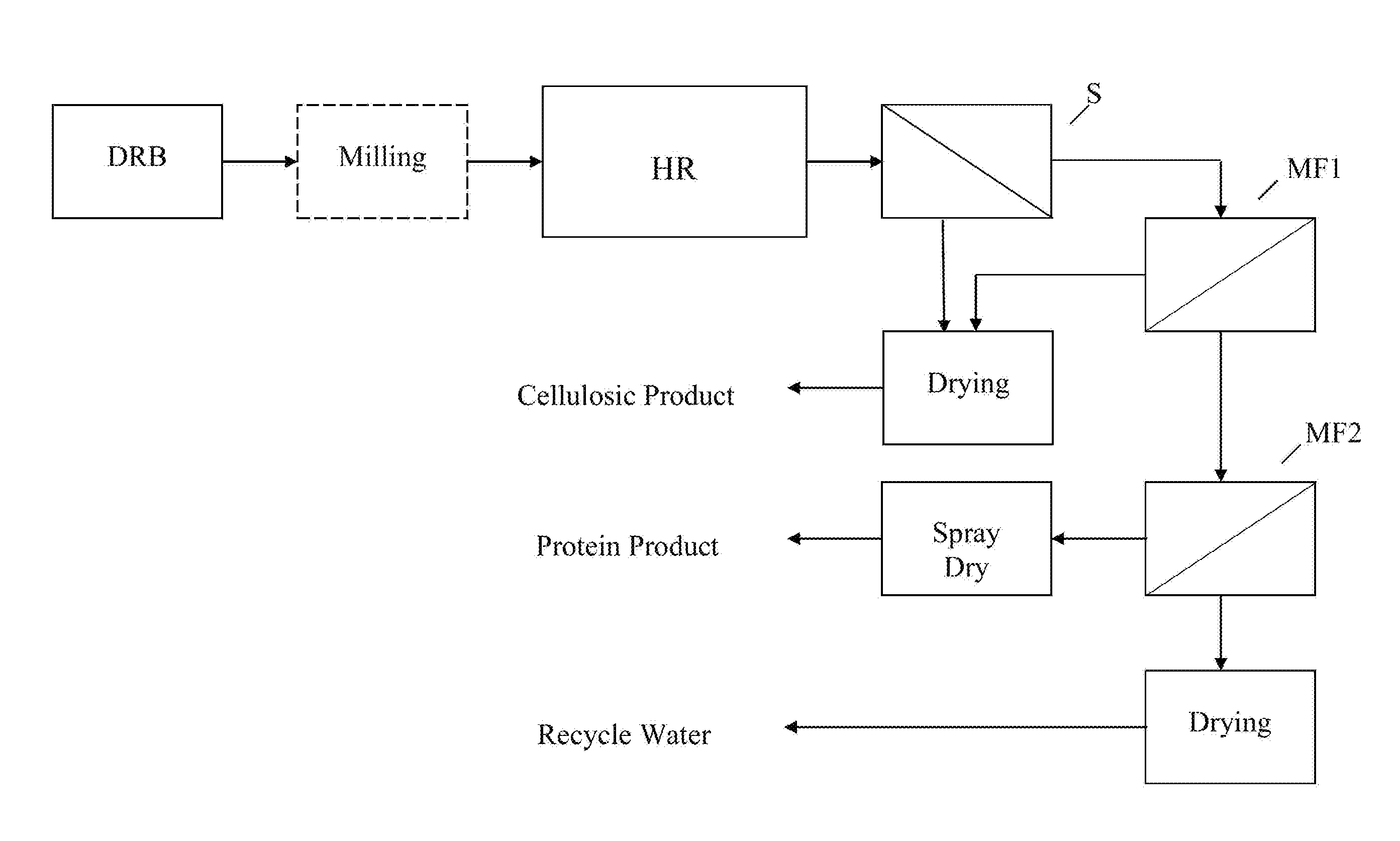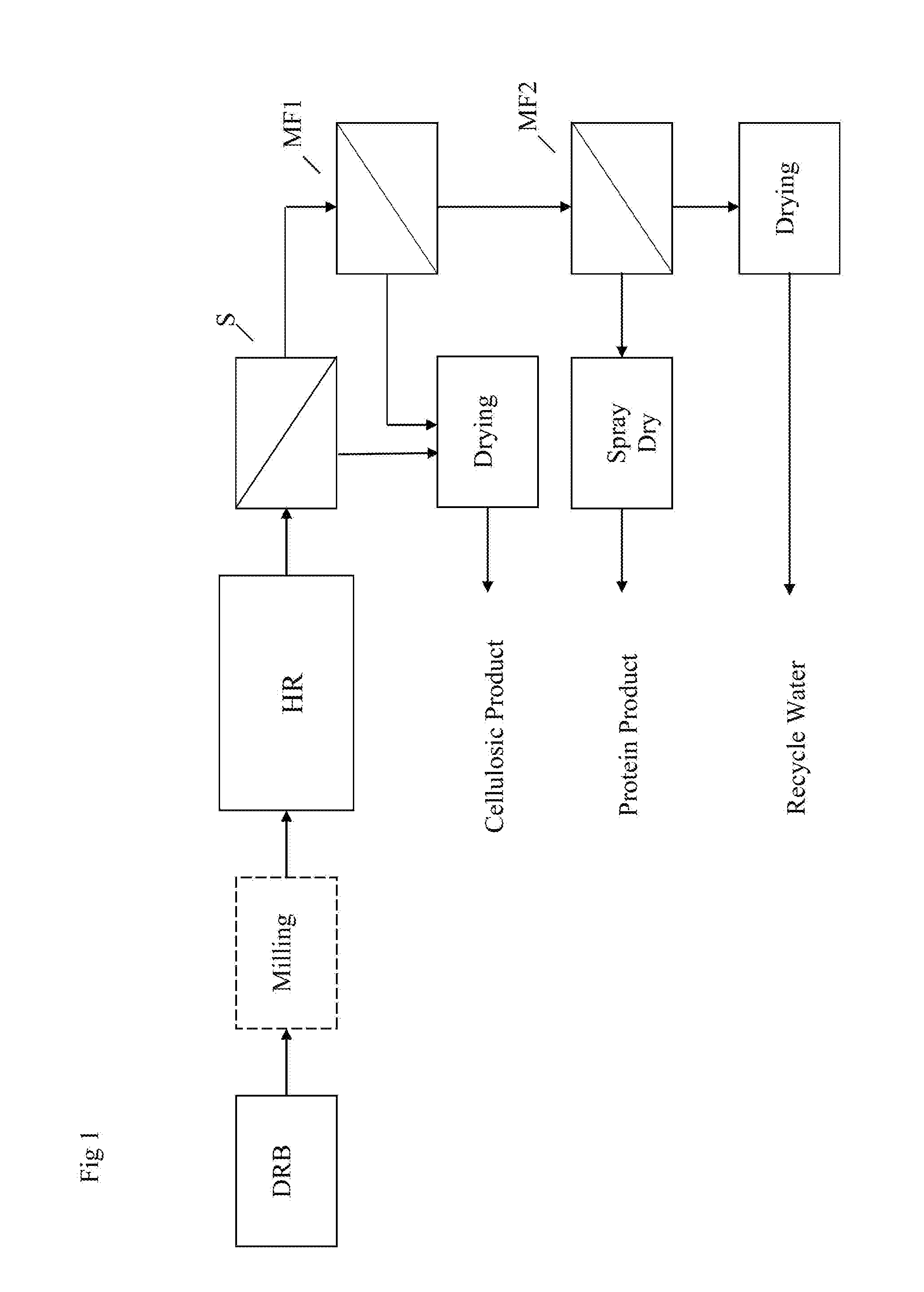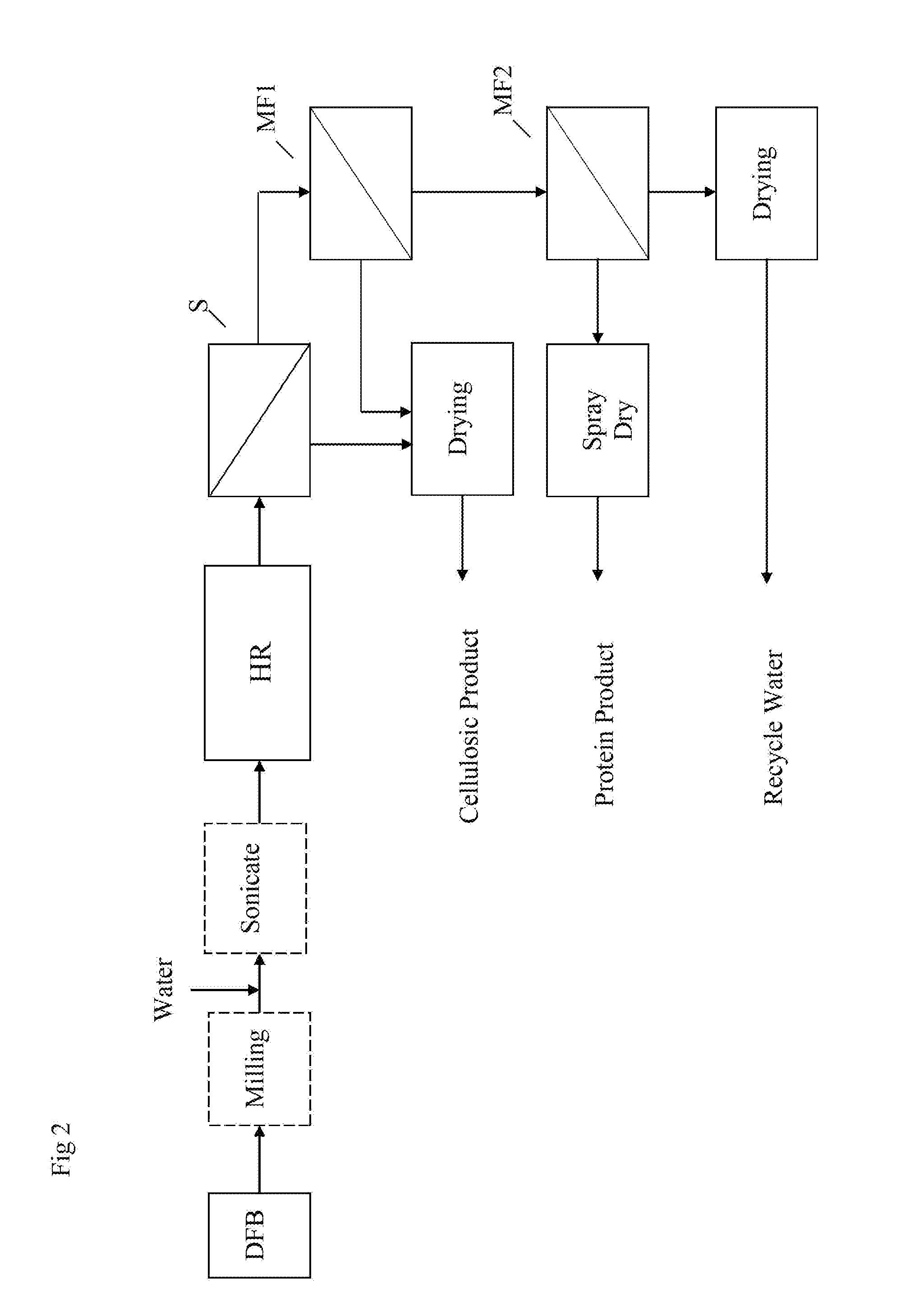Process for Producing Protein Concentrate and A Cellulosic Residue Material From Defatted Rice Bran
a technology of cellulosic residues and protein concentrates, which is applied in the field of processing defatted rice bran, can solve the problems of relatively high capital and operating costs of pyrolysis and gasification, subject to rancidification, etc., and achieve the effect of improving the accessibility of proteins
- Summary
- Abstract
- Description
- Claims
- Application Information
AI Technical Summary
Benefits of technology
Problems solved by technology
Method used
Image
Examples
example
[0062]Dry defatted rice bran is mixed with water so that the water to bran ratio is about 10:1. The mixture is then heated to 55° C. and hold at that temperature. The pH of the mixture is brought to a value of 5 with an appropriate base or acid such as sodium hydroxide or hydrochloric acid. A starch hydrolyzing amylase enzyme, such as glucoamylase, is added at 0.3% of total solids present. The temperature and pH is kept substantially constant for about 1 hr to hydrolyze the starch to glucose.
[0063]After 1 hr, the temperature of the mixture is raised up to about 60° C. and a pH to 9 using sodium hydroxide. An acceptable alkaline protease is added, such as alcalase, at a dosage of 10 mls / kg of protein. Keep at the desired pH until a degree of hydrolysis of 12 or higher is reached as measured by base addition.
PUM
| Property | Measurement | Unit |
|---|---|---|
| temperatures | aaaaa | aaaaa |
| particle size | aaaaa | aaaaa |
| temperature | aaaaa | aaaaa |
Abstract
Description
Claims
Application Information
 Login to View More
Login to View More - R&D
- Intellectual Property
- Life Sciences
- Materials
- Tech Scout
- Unparalleled Data Quality
- Higher Quality Content
- 60% Fewer Hallucinations
Browse by: Latest US Patents, China's latest patents, Technical Efficacy Thesaurus, Application Domain, Technology Topic, Popular Technical Reports.
© 2025 PatSnap. All rights reserved.Legal|Privacy policy|Modern Slavery Act Transparency Statement|Sitemap|About US| Contact US: help@patsnap.com



